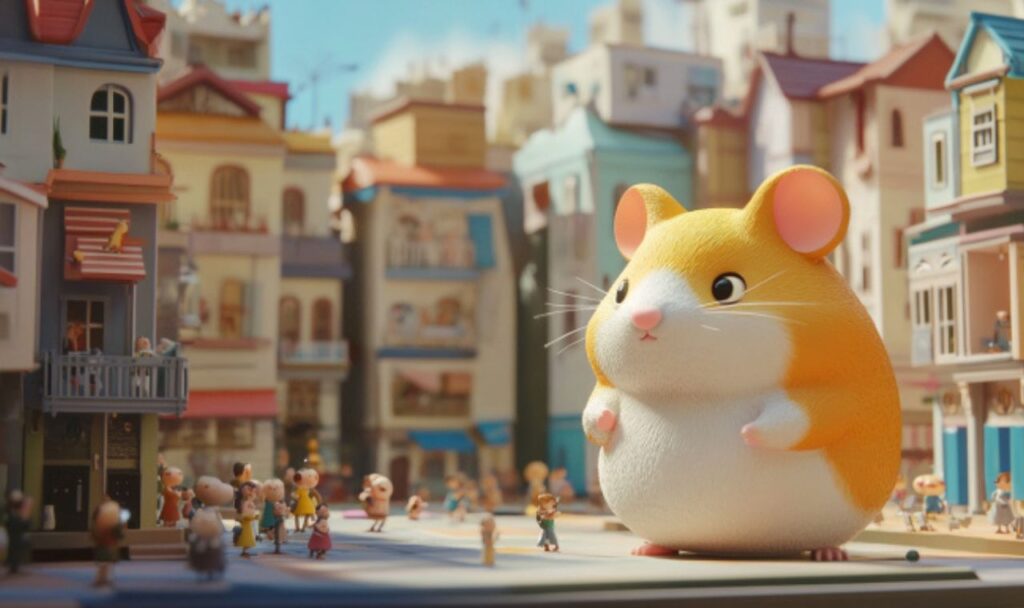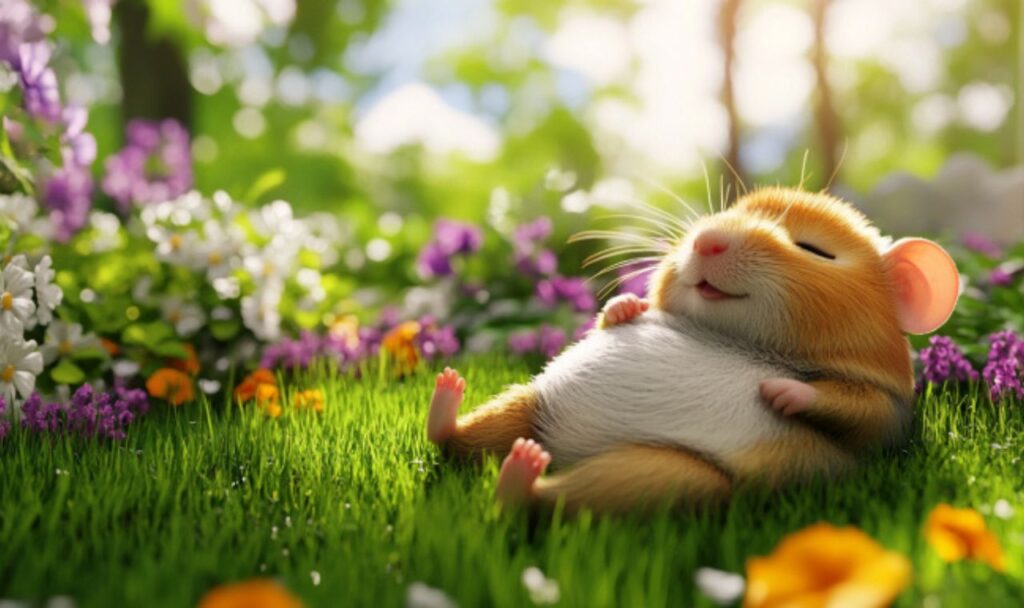When we think about keeping our pet hamsters happy, we often focus on providing a cozy cage, a balanced diet, and plenty of opportunities for physical exercise—like that trusty exercise wheel! But did you know that mental stimulation is just as crucial for their well-being? Hamsters are naturally curious and intelligent creatures, always eager to explore their surroundings and solve little “puzzles” in their environment.
In the wild, hamsters face challenges that test their problem-solving skills daily—from navigating complex burrows to foraging for hidden food. These activities keep their minds sharp and engaged. For our pet hamsters, however, life can get a bit monotonous, which is why incorporating puzzles into their routine can make a world of difference.
Puzzles not only provide mental enrichment but also tap into a hamster’s natural instincts to explore and forage. By offering puzzle-based activities, we can help improve their cognitive function, reduce boredom-related behaviors (like bar-chewing or excessive digging), and strengthen our bond with them through shared playtime.
In this article, we’ll explore why mental challenges are vital for hamsters, the types of puzzles best suited for their tiny paws and sharp minds, and how to introduce these activities to your furry friend. Plus, I’ll share some tips for creating your own DIY puzzles at home—because sometimes, the best toys are the ones we make ourselves!
Ready to boost your hamster’s brainpower? Let’s get started!
Why Hamsters Need Mental Challenges

Just like humans, hamsters thrive when their minds are engaged. While we might do puzzles, play brain games, or read to stimulate our intellect, hamsters rely on exploration, problem-solving, and environmental enrichment to stay mentally sharp. Without proper mental challenges, pet hamsters can become bored, stressed, or even develop destructive behaviors.
In this section, we’ll explore why problem-solving is a natural instinct for hamsters, the benefits of puzzle training, and the signs that your little furball is ready for some brain-boosting fun.
Natural Instincts and Problem-Solving
In the wild, hamsters are survival experts. Their problem-solving skills help them find and store food, navigate complex burrow systems, and avoid predators. Foraging is a major part of their daily routine, requiring them to remember food locations, figure out safe paths, and store their haul efficiently. Their burrows are also carefully designed with multiple entrances, escape routes, and hidden chambers, demanding a strong sense of spatial awareness and adaptability. Because hamsters are prey animals, they must constantly assess their surroundings and make quick decisions to escape danger.
Domesticated hamsters may not face these same life-or-death situations, but their natural instincts haven’t disappeared. Without enough stimulation, they may begin exhibiting behaviors like bar chewing, obsessive digging, or even repeated escape attempts—signs that they need more mental engagement. Puzzles help bridge this gap by mimicking real-world challenges in a safe and enriching way. Food-based puzzles allow them to “forage” for rewards, mazes and obstacle courses encourage strategic thinking, and interactive toys provide small but satisfying goals to achieve. These activities help pet hamsters stay engaged while also reducing stress-related behaviors.
Benefits of Puzzle Training
Engaging your hamster in problem-solving activities provides numerous benefits, starting with improved cognitive function. Learning how to navigate a maze, access a hidden treat, or manipulate an object sharpens their memory and helps them recognize patterns. Over time, this leads to faster learning, better adaptability, and a more confident, independent pet.
Mental stimulation also plays a key role in reducing boredom and preventing destructive behaviors. A hamster with nothing to do may resort to excessive chewing, frantic digging, or restless nocturnal activity. When puzzles are introduced, they provide a much-needed outlet for energy and curiosity, making hamsters more content and well-balanced.
Additionally, puzzles tap into a hamster’s natural foraging and exploration instincts. Instead of eating passively from a food dish, they get to “hunt” for their rewards by sniffing, digging, or manipulating objects. This encourages movement, builds confidence, and strengthens their natural problem-solving abilities. The more they practice, the better they become at tackling new challenges, keeping their little minds sharp and engaged.
Signs Your Hamster Is Ready for Puzzles
Not all hamsters will immediately take to puzzle training, but there are certain behaviors that indicate a readiness for more mental stimulation. A curious hamster that actively explores its enclosure, interacts with toys, and eagerly investigates new objects is likely to enjoy puzzle-solving activities. You might notice them moving objects around in their cage, pawing at unfamiliar items, or climbing and digging persistently—signs that they are looking for ways to engage with their environment.
Another good indicator is how quickly they learn simple tasks. If your hamster has already mastered coming to your hand for treats, following a routine, or finding their way through a basic maze, they are primed for more advanced challenges. A hamster that picks up on new experiences quickly is more likely to enjoy and benefit from problem-solving games.
Restless or escape-prone hamsters are also ideal candidates for puzzle training. If your pet frequently climbs the cage bars, chews at enclosure edges, or digs as if trying to tunnel out, they might not just be attempting an escape—they could be searching for more stimulation. Introducing engaging puzzles and interactive toys can redirect this energy into productive, rewarding activities that satisfy their natural instincts.
Hamsters are much smarter than they often get credit for, and their natural instincts make them perfect candidates for puzzle training. By introducing puzzles into their routine, you not only help them stay mentally engaged but also encourage behaviors that keep them happy, healthy, and entertained.
Next, we’ll explore the best types of puzzles for hamsters, including DIY options and store-bought toys that will get your little genius thinking!
Best Puzzle Types for Hamsters
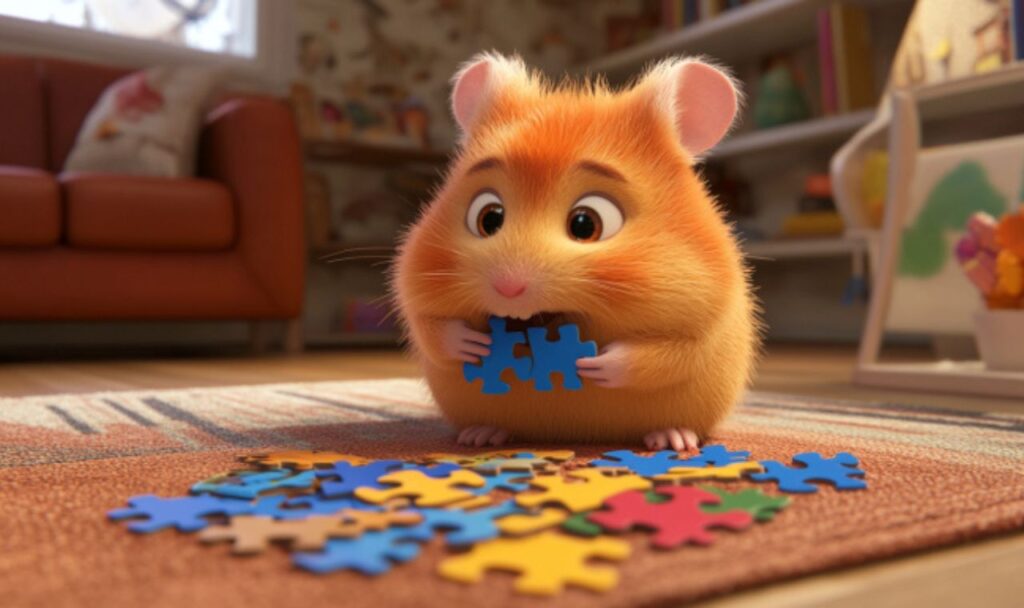
Hamsters may be tiny, but their curiosity and intelligence make them excellent problem solvers. Providing them with puzzles not only keeps them entertained but also strengthens their cognitive abilities, encourages natural behaviors, and prevents boredom. Whether you prefer simple DIY projects or store-bought interactive toys, there are plenty of ways to introduce puzzle-solving fun into your hamster’s daily routine.
Let’s explore some of the best puzzle types, from homemade treat-based games to obstacle courses and commercial puzzle toys designed to challenge your little explorer.
DIY Treat-Based Puzzles
One of the easiest and most rewarding ways to engage your hamster’s problem-solving skills is with DIY treat puzzles. These simple yet effective games mimic natural foraging behavior, encouraging your hamster to use its nose, paws, and teeth to uncover hidden food.
Toilet Paper Roll Treat Dispensers
A toilet paper roll can be transformed into an engaging puzzle with just a few simple modifications. One method is to fold the ends of the roll inward, creating a sealed tube with a few small holes poked into the sides. Place a few treats inside, and your hamster will need to roll, shake, or chew through the cardboard to get the reward. Another version involves stuffing the roll with hay, paper bedding, or tissue, hiding small treats inside to encourage digging and foraging.
Tissue Box Hide-and-Seek Challenge
A tissue box makes an excellent mini puzzle arena. Remove any plastic lining from the opening, then scatter treats inside and fill the box with shredded paper or hay. Your hamster will have to dig through the soft material to uncover the hidden goodies, simulating the way they would search for food in the wild. You can make it even more challenging by placing small cardboard dividers inside the box, forcing your hamster to navigate different sections to find the rewards.
Hidden Treat Maze
For a more complex challenge, use a shoebox or a shallow plastic container to create a simple maze. Cut small openings in pieces of cardboard and arrange them inside the box like maze walls. Hide treats in different sections so your hamster must sniff, climb, and navigate through the maze to find them. This puzzle provides both mental and physical exercise, encouraging problem-solving as well as exploration.
Obstacle Courses and Mazes
Obstacle courses and mazes are fantastic ways to challenge your hamster’s intelligence while also giving them a chance to exercise. These puzzles tap into their natural instincts to navigate burrows and tunnels, making them a great way to keep your hamster engaged.
Setting Up Tunnels and Ramps
Hamsters love exploring tunnels, and you can create a simple obstacle course using toilet paper rolls, cardboard tubes, and small wooden ramps. Arrange these elements inside a playpen or secure space, placing small treats at the end of tunnels or on top of ramps to encourage exploration. Adding gentle inclines and turns increases the challenge, pushing your hamster to think about different routes to reach their reward.
Using Household Items for a Fun Challenge
You don’t need fancy materials to build a great puzzle. Everyday objects like small cardboard boxes, paper towel rolls, and popsicle sticks can be turned into an interactive playground. Try placing a series of small cups upside-down with treats hidden underneath some of them, allowing your hamster to sniff out which ones contain rewards. Alternatively, create a bridge using popsicle sticks and encourage your hamster to climb over or under it.
Rewarding Exploration with Treats
The key to keeping obstacle courses engaging is to provide small rewards along the way. Scatter a few seeds or pieces of dried fruit throughout the course, so your hamster stays motivated to keep exploring. Over time, you can make the puzzles more challenging by adding twists, turns, and new elements that require extra effort to navigate.
Interactive Toys and Store-Bought Puzzles
For those who want to invest in high-quality puzzle toys, the pet market offers a variety of interactive options designed specifically for small animals. These toys can be great additions to your hamster’s environment, providing long-lasting mental stimulation.
Best Commercial Puzzle Toys for Hamsters
Many pet brands now offer interactive puzzle toys designed to challenge small animals. Some of the best options include puzzle feeders with hidden compartments that must be pushed or lifted to reveal treats. These toys require your hamster to use their problem-solving skills to figure out how to access the food, making snack time both fun and rewarding.
Rotating Puzzle Feeders
A rotating puzzle feeder is a fantastic way to encourage slow, thoughtful eating. These toys typically have small openings that dispense food when turned in a certain direction. Hamsters must learn how to spin or nudge the feeder to release their meal, making it a great way to stimulate their minds while also preventing overeating.
Adjustable Difficulty Levels for Continuous Engagement
One of the best features of many commercial puzzle toys is the ability to adjust their difficulty. Some puzzle feeders allow you to start with easy access to treats and gradually make it more challenging as your hamster gets better at solving the puzzle. This keeps the experience fresh and prevents your pet from losing interest over time.
No matter which type of puzzle you choose, the key is to keep things varied and interesting. A mix of DIY treat puzzles, obstacle courses, and commercial toys ensures that your hamster stays engaged and continuously develops their problem-solving skills. Whether they’re rolling a toilet paper tube, sniffing through a maze, or spinning a puzzle feeder, your little genius will benefit from both the mental and physical stimulation.
Up next, we’ll discuss how to train your hamster to solve puzzles and gradually increase the challenge to keep their mind sharp and active!
Training Your Hamster to Solve Puzzles

Now that you have some fun and engaging puzzle ideas, the next step is to train your hamster to use them effectively. While hamsters are naturally curious, they may not immediately understand how to interact with a puzzle, especially if it’s a new concept for them. Training should be a gradual, positive experience that encourages their problem-solving instincts without causing frustration.
In this section, we’ll explore how to introduce puzzles step by step, keep your hamster engaged, and track their progress to ensure they continue enjoying the challenge.
Introducing Puzzles Gradually
If your hamster has never encountered a puzzle before, it’s best to start simple. Introducing puzzles too quickly or making them too difficult from the start can lead to confusion and frustration. A great way to begin is by using puzzles that require only a small effort to receive a reward, then gradually increasing the complexity.
One of the easiest ways to introduce puzzles is with a simple treat-dispensing toilet paper roll. Place a few treats inside an open-ended roll so your hamster can easily retrieve them. Once they understand that treats can be hidden inside objects, you can start folding the edges of the roll to create a slight challenge. From there, you can move on to puzzles that require more effort, like tissue box hide-and-seek games or mazes with multiple paths.
Scent cues can also help guide your hamster in the right direction. Since hamsters rely heavily on their sense of smell, rubbing a small amount of their favorite treat on the puzzle can encourage them to investigate. As they become more comfortable with puzzle-solving, you can begin offering food rewards that are slightly harder to reach, encouraging them to think critically about how to access their reward.
Throughout this process, pay close attention to your hamster’s problem-solving approach. Some hamsters may instinctively try to push objects aside, while others might use their teeth to chew through obstacles. Understanding how your hamster interacts with puzzles can help you tailor challenges to their natural instincts, making the experience more rewarding for them.
Encouraging Engagement and Learning
Once your hamster starts engaging with puzzles, it’s important to reinforce their successes with positive encouragement. While verbal praise won’t mean much to a hamster, food rewards and consistent reinforcement can help them associate puzzle-solving with a positive outcome. Start by rewarding even the smallest attempts, such as sniffing or touching the puzzle, and gradually encourage them to complete more complex tasks.
Adjusting the difficulty level is key to keeping your hamster engaged. If a puzzle is too easy, they might lose interest quickly. If it’s too difficult, they may become frustrated and stop trying. To maintain the right balance, observe how long it takes them to complete a puzzle. If they solve it in seconds, try making the next challenge slightly more complex by adding extra obstacles or requiring more steps to reach the reward.
To prevent frustration, keep training sessions short and fun. Hamsters have short attention spans, so limiting puzzle play to 5-10 minutes at a time ensures they stay interested. If your hamster seems disinterested or struggles too much, it’s okay to take a break and try again later with a simpler version of the puzzle. The goal is to make problem-solving an enjoyable activity, not a stressful one.
Tracking Progress and Adjusting Challenges
As your hamster becomes more skilled at solving puzzles, you’ll start to notice improvements in their speed and efficiency. Pay attention to how quickly they solve familiar puzzles—if they complete a task much faster than before, it’s a sign that they’re ready for a new challenge.
Introducing new challenges helps prevent boredom and keeps your hamster’s problem-solving skills sharp. Try rotating different types of puzzles so they don’t become too predictable. For example, if your hamster has mastered a treat maze, introduce an obstacle course or a more advanced puzzle feeder to keep things interesting.
It’s also important to reward creativity in problem-solving. Not all hamsters will approach puzzles the same way, and that’s perfectly fine! Some may use their paws to push objects, while others prefer to chew through obstacles. If your hamster finds an unconventional way to solve a puzzle, celebrate their ingenuity rather than forcing them to follow a specific method. This flexibility keeps the experience fun and rewarding for both you and your pet.
Training your hamster to solve puzzles is a fun and enriching experience that strengthens their cognitive abilities and deepens your bond with them. By starting with simple challenges, gradually increasing difficulty, and keeping sessions engaging, you’ll help your hamster develop essential problem-solving skills.
In the next section, we’ll cover common challenges hamsters face when learning to solve puzzles and how to troubleshoot any issues that arise. Stay tuned for tips on keeping your hamster’s puzzle experience frustration-free and exciting!
Common Challenges and Solutions
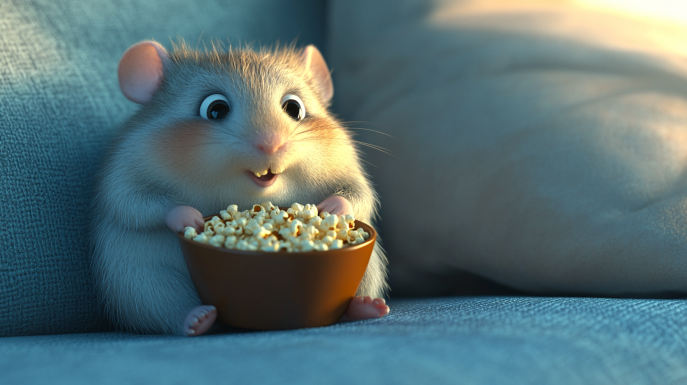
Even the smartest hamsters may struggle with puzzles at first. Some might ignore them completely, while others may become frustrated if they can’t solve them right away. Just like humans learning a new skill, hamsters need patience, encouragement, and the right level of challenge to stay engaged.
If your hamster isn’t responding to puzzle training as expected, don’t worry! In this section, we’ll go over common challenges hamsters face when learning to solve puzzles and practical solutions to keep them motivated and having fun.
Lack of Interest in Puzzles
One of the most common issues is that a hamster simply ignores the puzzle. This can happen for a few reasons—maybe the puzzle doesn’t spark their curiosity, the reward isn’t motivating enough, or the challenge level isn’t well-suited to their skillset.
To fix this, start by choosing the right type of puzzle for your hamster’s personality. Some hamsters enjoy foraging-style puzzles, where they have to dig or search for food, while others prefer physical challenges like climbing or pushing objects. If your hamster doesn’t seem interested in one type of puzzle, try a different approach. For example, if they ignore a rolling treat dispenser, they might be more engaged with a maze or a simple hide-and-seek game inside a tissue box.
Using high-value treats can also make a huge difference. If your hamster isn’t excited about the puzzle, it might be because the reward isn’t worth the effort. Instead of offering basic hamster pellets, try using something more tempting, like sunflower seeds, dried fruit, or small pieces of a favorite vegetable. Once they associate puzzles with tasty rewards, they’ll be more inclined to participate.
Lastly, make sure the puzzle matches your hamster’s skill level. If it’s too complicated, they might not even attempt it. Start with an easy version of the puzzle, such as scattering treats around the edges instead of fully hiding them. As your hamster gains confidence, gradually increase the difficulty to keep them engaged.
Hamster Gets Frustrated Easily
Some hamsters may try a puzzle a few times and then give up if they don’t get instant results. This is usually a sign that the challenge is too difficult or that they don’t understand what to do.
Breaking the puzzle into smaller steps can help your hamster build confidence. Instead of giving them a complex multi-step challenge right away, introduce the puzzle in stages. For example, if you’re using a toilet paper roll treat dispenser, start by keeping the ends open so they can easily retrieve the food. Once they’re comfortable with this, fold one side slightly to add a minor obstacle. Gradually increase the difficulty until they’re solving the full puzzle.
Using more obvious scent cues can also guide your hamster toward the right solution. Since hamsters rely heavily on their sense of smell, rubbing a small amount of treat dust (such as ground-up sunflower seeds) near the puzzle’s opening can encourage them to interact with it. You can also place a tiny treat just outside the puzzle to spark their curiosity before leading them to the main challenge.
Allowing free exploration before introducing complexity can prevent frustration as well. Instead of expecting your hamster to solve the puzzle immediately, let them investigate it on their own first. Give them time to sniff, nudge, and explore the object without pressure. Once they’re familiar with it, they’ll be more likely to interact with it in a problem-solving way.
Keeping Puzzles Exciting Over Time
Even if your hamster enjoys puzzles at first, they might lose interest if they become too predictable. Just like humans, hamsters need variety and new challenges to stay engaged.
Rotating puzzle options ensures that your hamster doesn’t get bored. Instead of offering the same puzzle every day, switch things up. One day, use a treat-dispensing toilet paper roll; the next, set up a small maze. If you have store-bought puzzle toys, keep a few in rotation and swap them out every few days to keep things fresh.
Adding new challenges with familiar elements can also help maintain engagement. If your hamster has mastered a certain puzzle, modify it slightly to make it more interesting. For example, if they’ve figured out a basic treat dispenser, try adding a second layer of cardboard to make it a bit harder. If they enjoy navigating a maze, rearrange the walls or create new paths to keep things unpredictable.
Observing your hamster’s preferences and adapting accordingly is the best way to ensure long-term success. Every hamster has unique problem-solving styles—some love pushing objects, while others prefer digging or chewing through barriers. If you notice your hamster consistently enjoying one type of challenge, incorporate similar elements into new puzzles. Paying attention to what excites them most will help you design puzzles that keep their interest alive.
Training a hamster to solve puzzles takes patience, experimentation, and a little creativity. If they seem uninterested or frustrated, it’s usually just a matter of finding the right approach. By choosing puzzles that align with their natural instincts, offering enticing rewards, and gradually increasing the difficulty, you can turn puzzle-solving into an enjoyable and mentally stimulating part of their daily routine.
Hannah’s Training Tactics
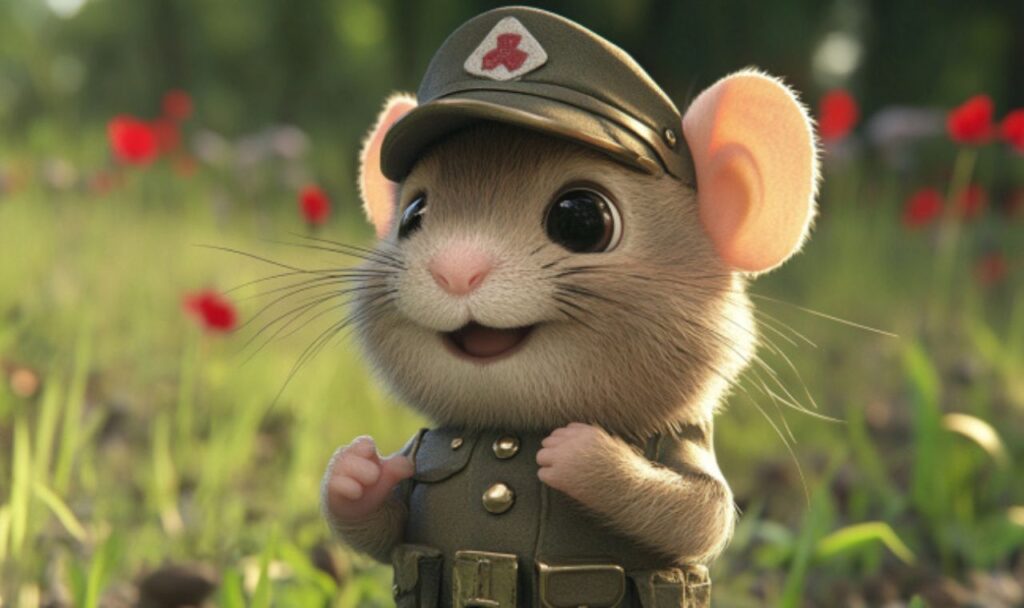
Training your hamster to solve puzzles should be a fun and rewarding experience for both of you. While some hamsters take to problem-solving quickly, others may need more encouragement and patience. The key is to make the process engaging, stress-free, and suited to your hamster’s personality.
Here are my top training tactics to ensure your furry friend enjoys puzzle-solving while sharpening their problem-solving skills.
Start Simple: Introduce Easy Puzzles Before Increasing Difficulty
Just like humans don’t start with expert-level brain teasers, hamsters need to build their problem-solving skills gradually. If the first puzzle you introduce is too complicated, your hamster might lose interest or get frustrated. The goal is to set them up for success so they stay engaged and motivated.
Begin with simple puzzles that offer an immediate reward. For example, leaving treats inside an open-ended toilet paper roll allows your hamster to retrieve them with little effort. Once they understand that treats can be hidden inside objects, you can increase the challenge by folding the ends slightly to make it more difficult.
Another great starter puzzle is scattering treats inside a shallow tissue box with no obstacles. After your hamster gets used to foraging inside the box, add some shredded paper or lightweight cardboard pieces to create a slight challenge. Over time, you can progress to more complex mazes, tunnels, and multi-step treat puzzles that require extra thinking and effort.
The key is to let your hamster develop confidence in their abilities before introducing tougher challenges. If they seem frustrated or uninterested, take a step back and simplify the puzzle until they feel comfortable.
Use Treats Wisely: Keep Motivation High with Small, Tasty Rewards
Food is one of the best motivators for hamsters, but how and when you use treats can make a big difference in puzzle training. Offering the right rewards at the right time can keep your hamster excited and engaged.
Start by using high-value treats that your hamster truly enjoys. If they’re not particularly interested in their standard food mix, try using more enticing options like sunflower seeds, dried fruit, or tiny pieces of fresh veggies. You want the reward to be worth the effort, so choose treats that make your hamster eager to solve the puzzle.
Keep the treats small to prevent overfeeding. Since hamsters have tiny stomachs, using little pieces ensures they stay interested in solving puzzles without becoming too full too quickly. If your hamster gets full too fast, they may lose interest in playing altogether.
Timing is also important. If your hamster is already well-fed and sleepy, they may not be motivated to work for food rewards. Try introducing puzzles when they are naturally more active, such as in the early evening when they wake up and start exploring their enclosure.
In addition to food, you can also use variety as a motivator. Rotating between different treats or occasionally hiding small bits of food in unexpected places keeps the experience fresh and exciting. The element of surprise makes puzzle-solving more enjoyable and taps into their natural foraging instincts.
Observe and Adapt: Every Hamster Has a Unique Problem-Solving Style
Not all hamsters approach puzzles the same way. Some will immediately try to chew their way through an obstacle, while others might use their paws to push objects aside or even attempt to lift them. Observing how your hamster interacts with different puzzles can help you tailor challenges to their natural problem-solving style.
If your hamster prefers using their nose and paws, they may enjoy pushing lightweight objects like small cardboard pieces or rolling treat-dispensing toys. If they tend to bite and chew their way through barriers, puzzles that involve hidden treats inside shredded paper or hay might be a better fit.
Pay attention to their reactions. If a puzzle seems too frustrating, simplify it by making the reward easier to access. If they solve it too quickly, make it a little harder by adding extra steps or obstacles. The goal is to keep them challenged but not overwhelmed.
Additionally, take note of their favorite types of play. Do they enjoy tunnels and mazes? Are they more interested in digging and foraging? Adapting puzzle activities to match their preferences will make problem-solving feel like a natural and fun experience rather than a confusing task.
Final Thoughts on Training Tactics
By starting with simple challenges, using treats wisely, and adapting to your hamster’s unique learning style, you can turn puzzle-solving into an enjoyable and enriching activity. The more you observe and adjust based on your hamster’s reactions, the better their experience will be.
Remember, training should always be a positive experience—one that keeps your hamster engaged, entertained, and mentally stimulated. With patience, creativity, and the right approach, you’ll soon have a tiny puzzle-solving genius on your hands!
Conclusion

Hamsters may be small, but their curiosity and intelligence make them natural problem solvers. Providing them with puzzles is a fantastic way to keep their minds active, prevent boredom, and encourage behaviors that mimic their natural instincts. Throughout this guide, we’ve explored how puzzles can enhance a hamster’s problem-solving skills, the best types of puzzles to use, and how to introduce training in a fun and engaging way.
Recap of Key Points on Hamster Problem-Solving Skills
Mental stimulation is just as important as physical exercise for hamsters. In the wild, they rely on their intelligence to find food, navigate tunnels, and avoid predators. Domesticated hamsters still retain these instincts, and puzzles provide a safe and enriching way to challenge their minds.
We covered various types of puzzles, including DIY treat-based puzzles like toilet paper roll dispensers and tissue box hide-and-seek games, as well as more complex mazes and interactive store-bought toys. Each type of puzzle offers unique challenges that help strengthen cognitive skills, improve memory, and provide an outlet for natural foraging behavior.
Training should always be approached with patience. Start with simple puzzles and gradually increase the difficulty as your hamster gains confidence. Using high-value treats as motivation and observing your hamster’s problem-solving style ensures that each puzzle remains an enjoyable challenge rather than a frustrating experience.
Encouragement to Experiment with Different Puzzle Types
No two hamsters are exactly alike—some may enjoy pushing and rolling objects, while others prefer digging, chewing, or climbing. That’s why experimenting with different puzzle types is so important. If one type of puzzle doesn’t seem to interest your hamster, try another approach.
Rotate puzzles regularly to keep your hamster engaged, and introduce small changes to familiar challenges to make them feel fresh. A simple cardboard maze, for example, can become more exciting by rearranging pathways or adding new obstacles.
By mixing up puzzle styles and adjusting the level of difficulty based on your hamster’s progress, you create an ever-changing environment that keeps them mentally sharp and eager to explore.
Final Thoughts on Making Puzzle Training a Fun Bonding Experience
One of the most rewarding aspects of puzzle training is the opportunity to strengthen your bond with your hamster. While hamsters are naturally independent, engaging them in fun challenges allows them to associate your presence with positive experiences. Whether you’re hiding treats for them to find, watching them navigate a homemade maze, or cheering them on as they figure out a new puzzle toy, these moments of shared interaction build trust and deepen your connection.
Ultimately, puzzle training isn’t just about mental stimulation—it’s about creating a more enriched and fulfilling life for your hamster. A happy, engaged hamster is less likely to develop stress-related behaviors and more likely to show confidence, curiosity, and playfulness.
So, get creative, have fun, and enjoy the process of watching your little genius tackle new challenges. With the right approach, puzzle training will become a favorite activity for both you and your furry friend!


